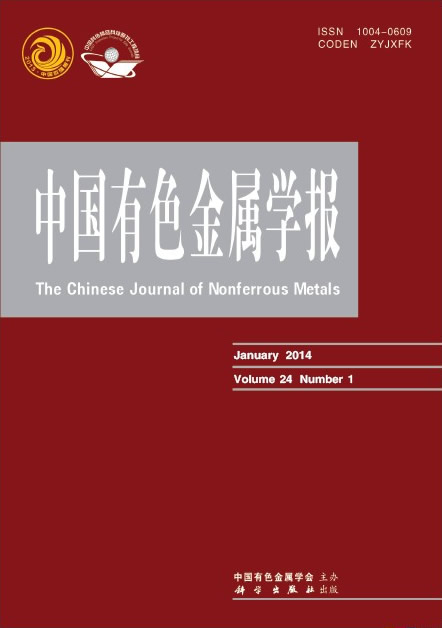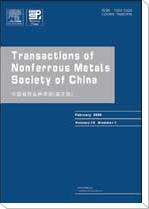中国有色金属学报(英文版)
Transactions of Nonferrous Metals Society of China
| Vol. 35 No. 9 September 2025 |
(1. School of Materials Science and Engineering, Central South University, Changsha 410083, China;
2. National Key Laboratory of Science and Technology on High-strength Structural Materials, Central South University, Changsha 410083, China)
Abstract:Elements (As, Bi) and (Cu, Fe) exhibiting two typical segregation behavior in liquid Sb alloys were selected as solute atoms for analysis. Ab initio molecular dynamics (AIMD) simulations were employed to study the molten Sb alloy at different temperatures. By analyzing its pair correlation function (PCF), bond pairs, bond angle distribution function (BADF), and Voronoi polyhedron (VP), the short-range order (SRO) of the alloy was investigated. In the Sb melt, the solute atoms Cu and Fe, which have smaller distribution coefficients, exhibit a stronger affinity for Sb than the solute atoms As and Bi, which have larger distribution coefficients. The BADF of As and Bi with larger distribution coefficients shows a lower probability of small-angle peaks compared to large-angle peaks, whereas the BADF of Cu and Fe with smaller distribution coefficients exhibits the opposite trend. The BADF reveals that Sb-As and Sb-Bi approach pure Sb melt, while Sb-Cu and Sb-Fe deviate significantly. Compared to Sb-Cu and Sb-Fe, the Sb-As and Sb-Bi systems exhibit more low-index bonds, suggesting weaker interactions and more disorder. The VP fractions around As and Bi atoms are lower than those around Cu and Fe, and the VP face distributions around As and Bi are more complex. There are differences in the VP around different solute atoms, primarily due to the varying bond pair fractions associated with each solute atom. Fe has the smallest diffusion coefficient, primarily due to its compact local structure.
Key words: AIMD; segregation; liquid Sb-based alloys; short-range order; As; Bi; Cu; Fe


